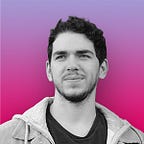Lessons from Product for personal development
I’m no role model when it comes to habits, but working as a product designer in tech I find it useful to draw inspiration from some of the frameworks in use in the industry. I think some of these lessons can — and sometimes they really should — be applied to personal development. Here are some processes that I adapted over the years to help me grow my life.
Sessions
I look things up on Google dozens of times a day, and my brain has now learned that I don’t need to remember things because Google has all the answers. Even if I forget something, I can search for it again, and if memory is a muscle, it got weaker and weaker from lack of exercise.
Some time ago, I started making changes to this. Because often reaching a conclusion requires several sessions of browsing for information, whenever I start browsing looking for some sort of answer, I now create a new “session” entry in a Notion page and write down any useful input or thought process. Sometimes the title looks very much like the question I typed into Google.
This way, I make browsing more intentional and purposeful, and I remember things better because I had to make the effort to write them down. What comes out of my browsing doesn’t get lost and I can follow up on it.
Let’s make an example. Let’s say you’re considering buying a new couch, but you don’t know anything about couches. It’s not an easy decision so, and it’s not like you can just look one up and buy it right away. After adding it to your wishlist/backlog, you might first start looking at the average prices and start considering your budget. In the next session, if you decide to keep searching, you might learn about different materials and start looking into which one would fit you best.
Whatever it is that you’re searching for, sessions can help you avoid running into thought loops and keep asking yourself the question “Where was I at?”
Quarterly goal-setting and reviews
This might sound like toxic productivity, but it’s actually a good way of acknowledging your achievements and being more intentional about where you want to go with your life. It doesn’t have to be about your side hustle, money, or productivity. It can be about friends, sports, or anything in your personal life.
I personally like the OKR approach. OKRs — which stands for Objectives and Key Results — are a goal-setting framework used by many companies to plan and track inspirational, ambitious goals. The idea is that you set a clearly defined objective, and then you set some metrics that you are going to use to track them.
For example, I recently moved to Barcelona, a new city where I don’t know a lot of people. A possible objective could be: “Make new friends”. As key results to track this goal, I could use these metrics:
- Meet 20 new people outside of work
- Go to 5 different meet-ups
What I like about the OKRs method is that it orients you toward solutions. Your mindset will shift and you will seek the highest leverage action. Through key results, you can set the right incentives and measure progress towards your goals.
Generally speaking, the recommendation is to set ambitious goals and not goals that you already expect to achieve. At the end of the quarter (or whatever period of time you set for yourself) you need to follow up on your goals, giving a score from 0 to 100% to each of the key results. Of course, you might not be able to fulfill all the key results. In fact, if your score is too high you might want to set some more ambitious goals. 70% is generally considered a good score and will set the right level of challenge.
Prioritization
Because I work in product design, I’m also familiar with Kanban boards as a means for prioritization and development. Although originally meant for software development teams, Kanban boards have also a great potential for personal task management.
If you don’t know, the way Kanban works is you split tasks into multiple columns depending on their status. Tasks can be features (if we’re talking about a product) or tasks and improvements to bring a project to completion. The name and number of columns depend on the type of project and the process you choose to establish, but a common setup can be: Backlog, Not Started, In Progress, and Completed.
Using Kanban boards speeded up my projects a lot because it always gives me a clear overview of what I still need to do to consider the project done. It keeps me from doing random work that doesn’t take me closer to completion, like switching some stuff around, which is only improving the project on a subjective basis. It also reminds me that I don’t have time to do everything I would like to do, so I need to carefully prioritize the tasks with the highest impact.
Making relationships part of the equation
This is probably the most important yet ignored point of all. In most literature about productivity, happiness and relationships are usually not even in the picture, so it’s easy to forget what we’re actually being productive for.
What is it that we want to achieve? More money, or the life that we think the money could buy us? In a way, relationships are also side projects (with building a good life being the ultimate project, I guess) so when you schedule time for your activities, remember to account for them as well. Just as much as the right habits and processes can get you far, investing in relationships every day will make them blossom in unexpected ways.
